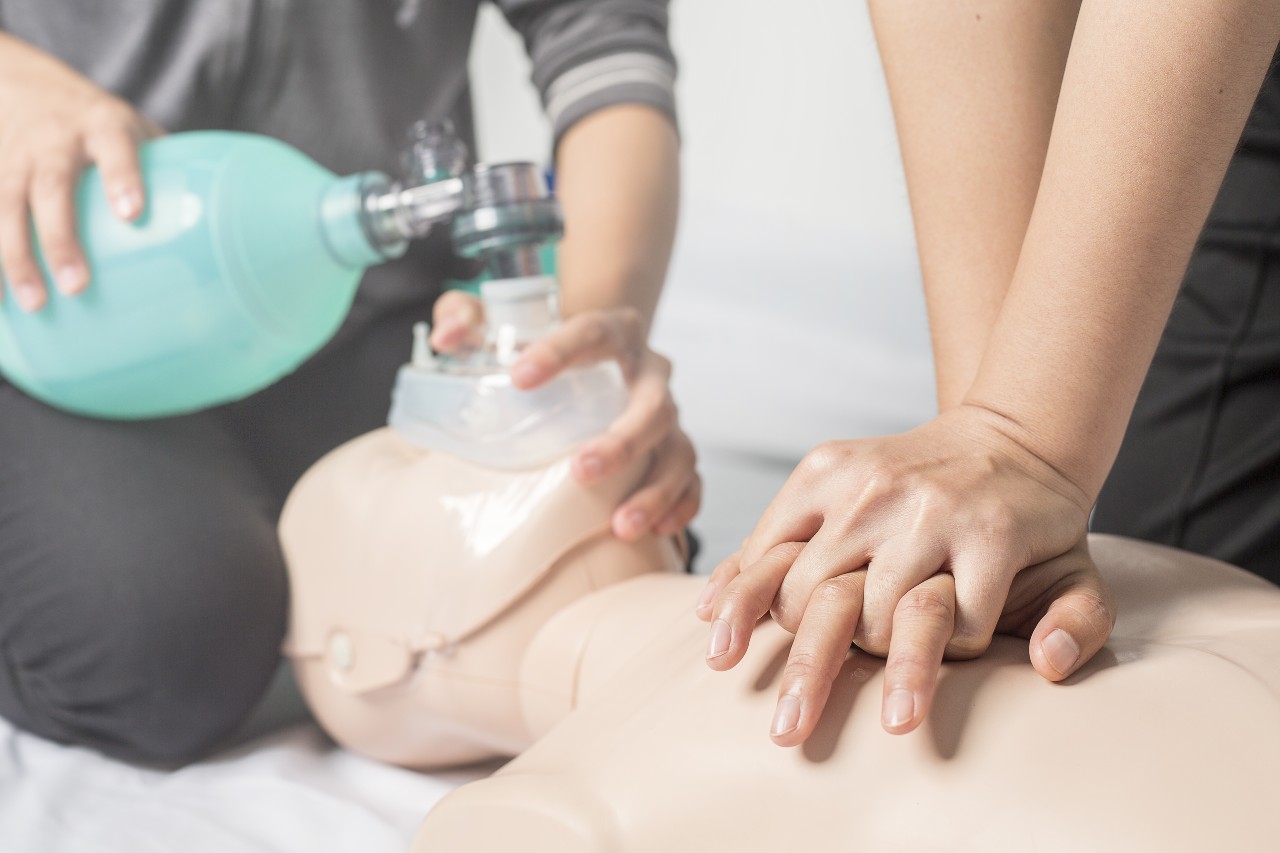Breathing A & P
 Breathing is controlled through the respiratory center, formed by a group of nerves in the medulla, the respiratory rhythmicity center, which controls the respiratory pattern (i.e., rate and depth of breathing). An individual can override this when doing activities such as talking, singing, etc. Chemoreceptors within the body respond to changes in the partial pressure of Oxygen (PO2) and Carbon dioxide (PCO2), and blood acidity. If there are slight changes in the partial pressures or acidity levels, this informs the respiratory center, and signals are sent to increase respiratory rate. An increased respiratory rate allows for more oxygen supply and removal of carbon dioxide, allowing the balance of partial pressures and acidity to return to normal.
Breathing is controlled through the respiratory center, formed by a group of nerves in the medulla, the respiratory rhythmicity center, which controls the respiratory pattern (i.e., rate and depth of breathing). An individual can override this when doing activities such as talking, singing, etc. Chemoreceptors within the body respond to changes in the partial pressure of Oxygen (PO2) and Carbon dioxide (PCO2), and blood acidity. If there are slight changes in the partial pressures or acidity levels, this informs the respiratory center, and signals are sent to increase respiratory rate. An increased respiratory rate allows for more oxygen supply and removal of carbon dioxide, allowing the balance of partial pressures and acidity to return to normal.
Inspiration occurs through the Diaphragm and External Intercostal muscles contracting. This increases the space within the thorax, decreasing atmospheric pressure. Air flows into the thorax as the atmospheric pressure tries to normalize within the larger thoracic space, bringing in Oxygen. On expiration, the Diaphragm and Intercostal muscles relax, causing the thorax to recoil. This increases atmospheric pressure within the lungs, forcing air out. Gaseous exchange occurs within the Alveoli, where capillaries surround the Alveolar structures, allowing the transfer of Oxygen and Carbon dioxide. On normal inspiration, the Tidal Volume (TV (amount of air passing into and out of the lungs during rest)) is around 500 ml.
Through this finely balanced process of respiratory control within the Medulla, Chemoreceptors measuring blood acidity and PO2/PCO2, and the response of increased respirations through contraction and relaxation of the Diaphragm and Intercostal muscles, homeostasis can be maintained and the body’s requirements met.